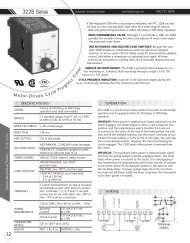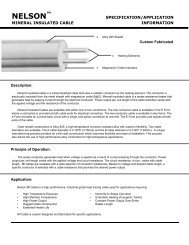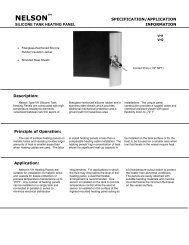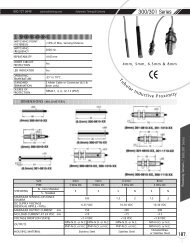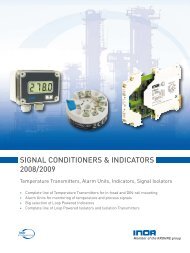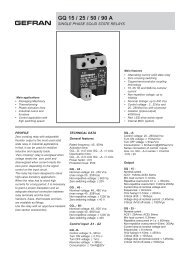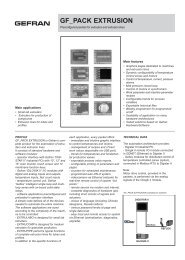DX Series
DX Series
DX Series
Create successful ePaper yourself
Turn your PDF publications into a flip-book with our unique Google optimized e-Paper software.
<strong>DX</strong> Operation<br />
Connection<br />
Disconnection<br />
1<br />
Insertion of the Plug<br />
As the plug contact<br />
is inserted, it engages<br />
and depresses the<br />
‘dead’ switching contact.<br />
This releases the<br />
locking mechanism.<br />
The switching contact<br />
is free to operate.<br />
After depressing the pawl, the plug<br />
is rotated in a counter-clockwise<br />
direction. This frees the switching<br />
contact for operation and the release<br />
of the remaining spring tension<br />
causes a quick breaking of the<br />
contacts. The plug may now be<br />
removed, if desired.<br />
2<br />
Charging the<br />
Operating Spring<br />
Clockwise rotation<br />
of the inserted plug<br />
winds the operating<br />
spring and rotates<br />
the switching contact<br />
into position to<br />
engage with the live<br />
receptacle contact.<br />
Receptacle with Plug Disconnected<br />
a. Switching Contact<br />
Shown in the open<br />
(dead) position<br />
3<br />
Making the Circuit<br />
With the final few<br />
degrees of rotation,<br />
the switching contact<br />
is released and force<br />
from the spring<br />
quickly drives it<br />
into engagement<br />
with the live<br />
receptacle contact.<br />
b<br />
a<br />
d<br />
c<br />
b. ‘Live’ Receptacle Contact<br />
Accessibility is denied<br />
c. Operating Spring<br />
Shown with tension released<br />
d. Mechanical Locking Device<br />
Blocks contact operation<br />
82<br />
Hazardous Duty Plugs & Receptacles



